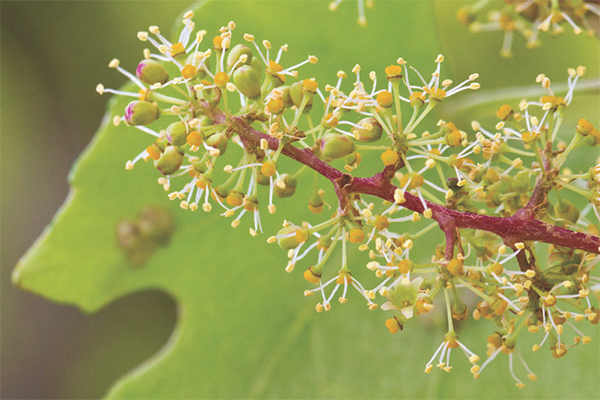Artificial intelligence to help cut vineyard costs and grow profits
Posted February 18, 2020

Artificial intelligence and machine learning are at the heart of a $5 million project led by the University of Adelaide and its Australian Institute for Machine Learning (AIML) to create a digital platform that will turn vital vineyard data into actionable advice.
The VitiVisor project is a collaboration between the university and Lot Fourteen-based AIML, Riverland Wine and Wine Australia, with support from UniSA and Primary Industries and Regions SA. Artificial intelligence and machine learning is one of the focus sectors at Lot Fourteen, Australia’s most exciting innovation neighbourhood.
VitiVisor is being developed in partnership with Riverland growers, but the end product will be available to growers in all regions.
VitiVisor brings together researchers in viticulture, engineering, remote sensing, farm economics, water accounting, artificial intelligence, machine learning and robotics, with grape growers who have deep knowledge of local vineyard production and processes in the Riverland, Australia’s largest wine-growing region, to find ways to reduce production costs.
The project was initiated under the leadership of Chris Byrne, Executive Chair of Riverland Wine. It has also been shaped by Wine Australia and Primary Industries and Regions SA is providing project management, ensuring a quick start so the team can collect data this growing season.
The project leverages technological advances in Australia and internationally, spanning sensing, connectivity, data analytics, artificial intelligence and machine learning.
These technologies have the potential to transform vineyard operations by enabling near real-time tracking of vineyard performance indicators such as growth and yield and predictions of the consequences of viticultural decisions, such as rates of irrigation, spraying, and nutrition and canopy management.
The VitiVisor digital platform will collect information direct from the vineyard via cameras and other sensors and analyse the large amounts of data produced to assess vineyard performance, predict the future and more significantly, provide actionable advice.
Professor Javen Shi, Director of AIML’s Probabilistic Graphical Model Group, explained the platform would use that data to offer coordinated advice on management practices such as irrigation, pruning, fertiliser, fungicide and pesticide applications.
“The vision for the project is that by digitally linking actions undertaken by growers on the vineyard with production outcomes, such as yield and quality measures, and with financial outcomes such as gross margins and profitability, it is possible to develop predictive analytics and advisory services to optimise vineyard decision making,” he said.
“We will use observations to create predictions, which can then be turned into actionable advice.
“For example, we are developing a robot that will go into vineyards and take thousands of photos of grapes at the early stage of growth known as inflorescence, when tiny dots appear on the bunches with little to no occlusion (visual obstruction) from the leaf canopy, indicating the number of bunches and berries that will grow.
“Soon after the project started, our technology is already able to automatically detect the number of inflorescences with up to 98 per cent precision and high recall, which is crucial for accurate prediction of yield,” Professor Shi said.
“The ability to make more accurate predictions of yield will enable growers to more accurately predict the need for inputs and the financial success of the season.”

Gloomy Eyes is showing part of VR Cinema, the publicly accessible component of Electric Dreams.
Professor Shi said preliminary benefit-cost estimates found considerable quantitative economic benefits from digital agricultural solutions that target decision making.
VitiVisor will also measure factors such as moisture levels in the soil and the plants, leaf area and the presence of pests and disease.
Measurements of leaf area can be used to make decisions such as irrigation rates and pruning for disease management to optimise the growth of grapes.
“We are also working on a program to predict future prices for water and electricity, which will feed into VitiVisor, to advise growers of the most cost-effective times to irrigate, ” Professor Shi said.
The price prediction and trading strategies will be based on AIML’s expertise in stock market prediction combined with extensive experience and expertise from the university’s economics academics.
We like to meet people and solve real world problems.
“Our advantage is that we make innovations every week. Quite often clients come to us after they are getting reasonable performance and they want to lift it from above-average to excellence,” said Professor Shi.
“With them, we often tailor make and/or invent algorithms to deliver the results they need. We are working with diverse industries including agriculture, mining, manufacturing, robotics, sports and fintech and so on. We keep making breakthroughs in these industries.”
AIML is ranked in the top three of global research organisations for computer vision and number one in AI and machine learning in Australia
Professor Shi recently formed an AIML team, DeepSightX, which in June 2019 won second place in a global competition held by Oz Minerals to predict mineral deposits. With only three months to prepare, the DeepSightX team beat one thousand entries from 62 countries and outperformed professional companies with over 40 years’ experience in mining.
In September 2019, Professor Shi and his team were judged winners of the SAIC Volkswagen Logistics Innovation Day in Shanghai for demonstrating how AI can improve vehicle manufacturing. The team’s entry was the MIDDOL digital factory, a dashboard that can monitor factory processes, including production, quality, stock levels, staff performance, safety and product delivery to vendors. The day is a global event where suppliers showcase the latest technologies in automobile manufacturing.
Great things come to those who subscribe
Subscribe
"*" indicates required fields
Adelaide 5000
Developed by Frame Creative
Design by The Sideways Theory
Design by Sixth Street Design
Developed by Frame Creative
© Lot Fourteen All Rights Reserved

